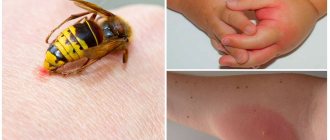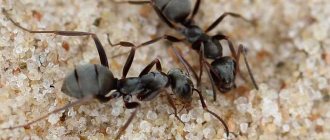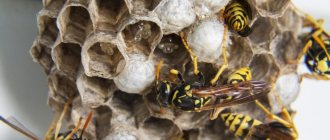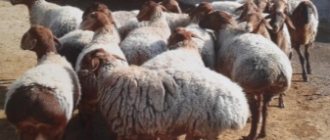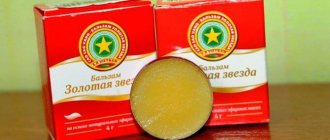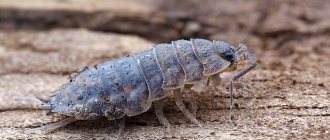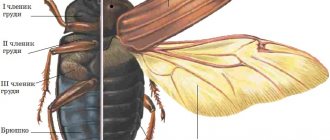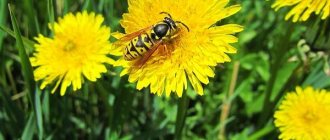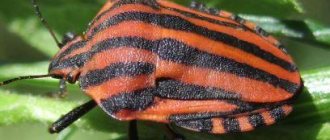Small red spiders in the apartment are not that uncommon. If you notice these little spiders on window sills and curtains, you are not alone. These insects, called clover mites, can be very annoying.
They are harmless, although they create a problem: unpleasant red spots that they leave behind. Getting rid of red little spiders in your apartment requires diligence and patience, but it is doable. Here are some tips to get you started.
Who are the little red bugs?
Red bugs in the apartment - clover mites, similar to female spider mites, usually invade apartments in early spring or late autumn.
These tiny red bugs are a millimeter or less in size. They can easily squeeze through tiny cracks around windows or foundations. You'll probably miss a few pests in your home. However, they tend to accumulate in large numbers. The good news is that you have nothing to worry about.
They do not bite people or pets, do not carry diseases, or damage furniture or food. But they leave a red stain if you crush them. It is not blood, but pigments in their body that give them their red color.
Pest control
If you notice that there are bugs in your apartment, do not put off fighting them until tomorrow. To begin with, determine by external signs what type of pest has settled in your apartment.
If these are beetles or anthrenuses, treat the furniture. Wipe it with a sponge soaked in a soap solution, it is better to use laundry soap, and then do the same, using vinegar instead of soap. Afterwards, sort out all the cereals, flour, sugar, nuts and other products where bugs may be located. Contaminated food must be thrown away.
If you notice skin beetles on yourself, you will have to make more efforts. In this case, we recommend that you use insecticides against insects, for example, “Combat”, “Dichlorvos”, “Raptor”, “Raid”. Try using tablets and fumigators. You can also use a folk remedy: rub boric acid powder with a stiff brush into all possible habitats of the bugs. After 24 hours of using chemicals, carry out general cleaning. Clothing, depending on the fabric, can be boiled or cooled at very low temperatures (no higher than -13 degrees Celsius), for example, by placing the item in the freezer.
Of course, it will not be possible to destroy all insects the first time. It is better to carry out such operations twice a week for a month.
If you do not have enough free time to regularly carry out insect control, contact a special service. Of course, this will not be cheap, but professionals guarantee that after the first treatment you will no longer see bugs in the apartment.
Cleaning up after pest control
A day after applying insecticides, your apartment requires thorough cleaning. The floors need to be washed by adding vinegar to the water. After cleaning the carpets with a vacuum cleaner, the bag must be thoroughly cleaned; insect eggs may still remain there.
Find out how to wash feather pillows.
Read here how to clean cupronickel spoons.
You can read how to clean the multicooker inside and out here: //o4istote.ru/texnika-dlya-chistoty/myt-multivarku/.
How to avoid bugs
Fighting beetles is quite difficult, so we advise you to follow simple rules:
- to prevent skin beetles from creeping into your apartment, keep an eye on clothes in closets; do not store things in dust or dampness,
- store food in tightly sealed containers,
- do not leave old cereals in kitchen cabinets,
- ventilate cereal storage areas,
- wipe the shelves with a sponge soaked in soapy water,
- wash floors with vinegar.
Now you know how to get rid of bugs in your apartment. If you notice such insects in your home, inspect the entire home. You may find that general cleaning and treatment with pesticides and insecticides will not be necessary. Follow simple rules of prevention, and you won’t have to do long and difficult work getting rid of bugs.
https://youtube.com/watch?v=F0MUv6PBVQ8%3Ffeature%3Doembed
How to eliminate them from the outside
Clover mites (Bryobia praetiosa) feed primarily on grasses and clover. These are not insects, but real mites belonging to the class of arachnids.
Little red spiders live in well-watered lawns. So if you have a problem with red bugs, reduce your watering schedule. Lawns that extend to the base of the house provide an easy way for them to enter indoors.
Also, consider removing vegetation from the foundation. Create a strip of stone or mulch that is difficult for pests to cross and reach the apartment. Plant plants that repel small red spiders: zinnia; marigold; petunia; juniper; spruce. They are resistant to pests and will help distract them from your home.
Spiders in the house: is it dangerous?
As a rule, arthropods are absolutely safe for people, but their very appearance often causes disgust. Although they help clean the apartment from cockroaches, bedbugs and other pests. At the same time, spiders reproduce slowly, so you don’t have to worry that in a matter of days your home will turn into a colony of spiders.
Important! If there are spiders in the house, it means that something is attracting them. Most often these are insects that form food for arthropods: flies, mosquitoes, cockroaches. If you take them out, the spiders will disappear.
Most arthropods can be observed in spring and summer, since these creatures love warm and dry climates.
Almost all types of house spiders are predators, that is, they use other living organisms as food, primarily insects. In order to catch a victim, they weave their web and lurk nearby. Once the unfortunate insect is trapped and entangled, the spider injects its venom, causing the death of the prey, which it devours outright or stores as a reserve.
Other types of insects in human homes
There are many varieties of insects that can easily live in an apartment. Here are some more types:
- Silverfish. This is a fairly common black beetle in the apartment. They are not liked only because of their unpleasant appearance. Some insect experts consider silverfish to be the most ancient insects on the planet. Despite the passage of millions of years, their appearance is very similar to their ancestors. There is a sugar silverfish. Home thermobia is also quite famous. Its food is various organic remains, which can remain forgotten in cracks, dust and other places for a long time. Domestic thermobia can also eat bread, paper, and sugar. It does no harm. It is easy to eliminate a green small insect - you just need to remove it from the wall and throw it out of the house or kill it.
- Bread grinder. This is a small brown beetle. It is considered one of the smallest insects that can live in an apartment. It can be up to 0.15 cm in length. To obtain food, it makes many moves in food products. In this case, bread and other food becomes poisonous to humans. But the larvae of the grinder can feed on almost anything, including paper and fibers of clothing (even semi-synthetic ones).
- Flour beetle. These are small beetles that prefer flour and cereals as food. They can also eat bran.
- Carpet beetles. These are very small insects that can also live in an apartment. They make holes in fur and leather products, damage carpets and book bindings. It's quite difficult to get them out. Larvae can infest food, then everything needs to be thrown away and treated with insecticides.
Springtail
Book louse is a separate species that differs from others. This is a small insect of a brownish color. Book louse rarely appears in colonies, but even if the group is not large, the insects will make ticking sounds, which indicates their presence in the room. The book louse in an apartment usually lives in books. She settles in their bindings. The insect prefers paste as food. It's quite easy to fight him.
You can use fumigation preparations and place them near the shelves with books, then the book louse will disappear.
Cockroach larvae
Sometimes in an apartment you can find insects that resemble bedbugs and cockroaches, but their color is completely different. If they have a whitish tint, then these are actually the larvae of bedbugs and cockroaches. This color is due to the fact that the chitinous layer is still thin and translucent, as it has not had time to form. It is quite difficult to meet such white cockroaches - they rarely appear. But bedbug nymphs can be seen along with the rest of the colony. Larvae of cockroaches and bedbugs can enter from various rooms through doors, windows, cracks, openings for sockets, ventilation. They can simply spread out, increasing the territory for the colony, or they can run away when they are being persecuted in other rooms, for example, with neighbors.
NOTE! To quickly get rid of fleas and lice, there are only three effective options:
- Calling a pest control service (expensive),
- Purchase (1390 rubles),
- Chemicals (doubtful effect).
Read more here...,
NOTE! To quickly get rid of bedbugs and other insects, there are only three effective options:
- Calling a pest control service (expensive),
- Buying an inexpensive one (1390 rubles),
- Chemicals (doubtful effect).
Read more here...,
Whitefly. These are white insects, in the apartment they can be found near plants
If only 1-2 cockroaches or bedbugs were found, they must be destroyed immediately so that the colony does not increase later. Be sure to thoroughly clean the room and use disinfectants. If the colonies of bedbugs and cockroaches are already quite large, then it is necessary to use insecticides. For example, aerosols, gels, and traps are suitable. There are many drugs that will eliminate the entire colony. But you definitely need to repeat the procedure after a while to improve the result and prevent the re-spread of parasites in the apartment.
Types of house spiders
The following arthropods can most often be found in apartments and private houses:
How can you recognize them? The distinctive features of a black spider are:
- Miniature body size, average length about 1.5 cm.
- The web has the shape of a tube.
The window has a body length of no more than 1 cm, an oval or round abdomen, and 8 long legs. It prefers to weave webs in dark corners or under window sills. Black spiders often have yellowish patterns on their bodies, which are densely covered with hairs. There are several pairs of eyes, but arthropods focus primarily on other senses.
Gray ones are also small, up to 15 mm. After the prey is caught in the web, the spider restores the web; it is mainly females who weave it.
The black hobo spider does not spin webs, but is large in size. He can enter the home through a door or window. It is distinguished by long legs and an elongated body. How does this giant hunt? It rushes at the chosen victim, injects poison, eats it and moves on. This is why such black arthropods will not become regular guests of your apartment. Having rid it of insects, they will continue on their way.
The haymaker spider is often also called the long-legged spider or the pigtail spider. The most remarkable thing about its appearance is its long legs (their length reaches 5 cm with a body length of only 1 cm). The number of legs is eight. The web is not sticky, but is so intricately intertwined that the caught insect has no chance of freeing itself. And the waiting hunter is already running towards his prey, ready to inject a lethal dose of poison into its trembling body.
This creature prefers to live in dry, warm places, especially near windows and in hard-to-reach corners, most often hanging upside down. It is interesting that the haymaker tries with all his might to prevent a large insect from getting into his net; in case of danger, he begins to swing the web.
Jumper. This is a special type of jumping domestic arthropod, the owner of eight eyes located in three rows. It can be distinguished by a wide variety of body colors and abdominal patterns. Due to the presence of tiny hairs and claws on its paws, this arthropod moves easily on glass surfaces. It is interesting that this spider is an exception among its fellows; it is not a predator, preferring to eat acacia flowers.
Arthropods are also often kept as pets, they are loved and cared for. The most popular types include the following:
- White-haired tarantula. This is a very calm species, its body length reaches an average of 7 cm, its paws reach a span of 16 cm. The lifespan of a tarantula directly depends on the sex: if the male lives only 3 years, then the female lives up to 4 times longer. For humans, these creatures are almost completely safe, but hungry spiders are able to bite.
- Bicolor tarantula. This is a very calm creature with a long lifespan; the female can live up to 20 years, the male – 5 times less. However, the bite of such a spider can cause an allergic reaction, so you need to be extremely careful. This tarantula prefers to eat large insects.
- Giant tarantula. A very interesting pet for home keeping, the body length can reach 10 cm, the paw span is 25 cm. The female will live up to 12 years, but the male will be devoured immediately after mating. This large species is native to the tropics of Brazil.
- Striped tarantula. It is also a large species, the leg span reaches 20 cm, the body length is no less than 10 cm. This is a very voracious creature, which should be fed at least a couple of times a week. Crickets, cockroaches, and beetle larvae can be used as food.
- Horned tarantula. This is a very aggressive and capricious creature, so a beginner in the business of breeding domestic spiders should refuse such a handsome one. The spider is especially active at night, and its distinctive feature is the horn adorning the cephalothorax. May bite.
Poisonous species are recommended for breeding only by experienced owners; for beginners, it is best to choose individuals with a calm, balanced character.
Haymaker
The haymaker is also called a window spider or centipede. The body size of the animal does not exceed 1 cm. House spiders differ from other types of arthropods by the presence of long legs.
The color of the insect varies from red to brown. The belly of the harvestman is slightly darker than the back. The individual weaves its web chaotically and often settles in attics, in the corners of rooms, and on windows.
Interesting information! The harvest spider often appears in houses in the autumn, when the air temperature drops significantly.
During the day, the insect can be seen on the wall with its legs spread out to the sides - this is how the animal basks in the sun. The individual attacks people only if there is a threat to his life. The bite of a harvestman is not dangerous to humans, since this type of insect is not poisonous.
Female centipedes lay eggs in the fall or summer. They weave cocoons for eggs from their own web. Larvae emerge from eggs after 2-3 weeks. The larvae resemble the adult harvestman, but are lighter in color.
The pigtail lives up to 12 months.
To get rid of the presence of arthropods in the house, it is enough to carry out a wet general cleaning of the room.
White house spider
One of the most dangerous spiders living in Russia is white. House spiders live in the south of the country and are otherwise called karakurts. The insect is able to enter people's homes in the summer.
A karakurt bite causes negative reactions in humans: allergic rashes on the skin, puffiness and swelling of the damaged area of the epidermis.
Children may have breathing problems and muscle spasms.
Black house spider
The insect's usual habitat is trees. An animal can get to a person with a flow of wind through open doors and vents. Animals enter the living space by moving along the walls.
Female black house spiders are larger than males: they grow up to 3 cm (including splayed legs).
In rooms, insects hide in corners, behind furniture. In appearance, the web resembles complex, random patterns. Animals feed on other small insects: moths, cockroaches, beetles, butterflies.
Black spiders cannot actively reproduce outside their own free will. Their activity fades with the onset of winter. Wet cleaning will help you get rid of the problem in your apartment.
Prevention measures
Despite the very small size of carpet beetles and anthrenus beetles, fighting them takes a lot of time. But the fight may turn out to be useless if a number of measures are not taken that will protect a person’s home from their repeated invasion. That's why:
- All windows must be equipped with mosquito nets.
- Install fine-mesh grilles on all ventilation systems.
- If a cat or dog lives at home, then you need to constantly clean up their fur, which is the source of food for the anthrenuses.
- Get rid of old, unnecessary things in a timely manner. Even if no one wears clothes, they attract dust, and this is a favorable environment for these tiny insects.
- If things are sent for storage, then before that it is better to treat them with a 0.005% solution of permin, an anti-pediculosis agent. This will protect things from the appearance of moth larvae and carpet beetles.
- From time to time, all things must be taken outside (to the balcony) at any time of the year, but it is better when it is sunny and frosty in winter, and in summer, when there is real summer heat. This kills both larvae and adults. This simple procedure will help protect things from infection by many insects.
- After using a vacuum cleaner, it is advisable to take the dust bags out into the cold. Particular care should be taken to vacuum carpets and rugs, as well as thick curtains, covers on chairs and sofas.
- Periodically clean upholstered furniture using a steam generator, which will help get rid of small bugs hiding in the folds and seams of the upholstery material.
- Use garlic or bay leaves to repel insects, which can simply be placed in containers where food is stored.
- In order to block the paths of entry into the home for insects, it is necessary to seal all the cracks, cracks and just holes that often occur in rooms such as the kitchen, bathroom, and even in rooms. The builders could have left them when they were making the heating, water supply, gas and sewage systems.
The appearance of any insects, especially in large numbers, in a person’s home can be considered an emergency. Every housewife should have information about what insects can appear in the apartment and know what they look like. In most cases, these are harmful and dangerous insects, since they intend to spoil everything, in the literal sense of the word. In addition, they can infect household members with various, and sometimes very dangerous, ailments. Therefore, if you suspect the appearance of any pests, you should immediately try to get rid of them in any available way.
It is better to resort to chemicals in rather difficult situations when it is not possible to get rid of pests by other means. Most likely, the fight is being waged in the wrong direction and not in all possible, sometimes quite simple ways that require consistency, but some owners are simply not ready for this. You should also remember that it is better to take care in advance to ensure that pests cannot enter your home. Of course, it is impossible to completely protect yourself from this, but you should not leave any chance for pests and parasites.
Reasons for appearance
The main habitat of insects is gardens, forests, orchards and trees. They build nests on plants and weave webs there.
The main reason why house spiders appear in residential areas is an abundance of suitable food. Adults are voracious, so they settle wherever there is a sufficient number of flies, cockroaches, mosquitoes and beetles.
Another factor that provokes the dispersal of creatures is suitable living conditions in terms of temperature and humidity.
Spiders love darkness, coolness and high humidity. In an apartment or house, insects settle behind radiators, on the back walls of furniture, and in the bathroom. Frequent destruction of the web forces predators to change their habitat.
More often, small animals can be seen in houses with damp foundations. Spiders do well in damp and dark rooms.
Creatures enter a person’s home through windows, doors, or the basement. People can bring an unwanted guest on clothes or with food (vegetables, fruits). If the home does not have conditions suitable for the insect, then it is unlikely to stay long.
How to prevent bugs from appearing in the bathroom
It is not possible to protect your room 100% from insect infestation unless you regularly carry out preventive measures by specialized services. However, by putting into practice the basic tips presented below, you can significantly reduce the risk of nasty bugs and other insects in your bathroom.
- First of all, monitor the sanitary condition of the room, do not allow dirt and debris, puddles and soap deposits to accumulate on the walls and floor.
- Secondly, promptly repair leaking pipes and ensure the tightness of the connecting parts of the plumbing, since leaking liquid and dampness in the room attracts numerous bugs.
- Third, provide protection on ventilation grilles and window vents to prevent small insects from entering from outside.
- Fourthly, regularly carry out general cleaning of the bathroom (at least once a month) using modern chemicals; as an alternative to cleaning products, you can use regular soda or vinegar solution for cleaning.
These simple recommendations will help you keep your room clean and also prevent pests from entering your home.
Get them out of the house
If you find red spiders a nuisance and want to get rid of them, use a vacuum cleaner. Then dispose of the bag in an outdoor trash bin away from your home. They can and will crawl back out of the bag if left indoors.
Or place sticky traps on windowsills or other places where you find large clusters of clover mites. As soon as they are inside, they attack indoor plants because this is their food source. Be sure to get rid of the little red spiders or your plants will die.
Appearance and habits of kitchen pests
The bugs that appear in the kitchen are similar to each other, although they have different origins. There are flour (flour beetle) and wood (grinder) insects. Both species are small, brown, live in cabinets and spoil food. But the flour eater loves cereals and flour, and the grinder loves crackers and wood.
In addition to taste preferences, bugs differ in appearance. Suriname mucoeds are long, elongated, dark brown, similar to a weevil. And the grinders are lean, more rounded and curved, with a small head “hidden” under a chitinous hood. They are also brown, but of a lighter shade. If the color of the flour eater can reach black, then the grinder, on the contrary, can reach yellowish.
“Guests from Suriname”, flour bugs, appear in the kitchen with any type of cereal: semolina, rice, buckwheat, wheat. They do not disdain beans, dried fruits, cookies, crackers. Grinder beetles feed on bread, bagels, crackers, wood and book pages. Small parasites, if they are in the kitchen, will crap and multiply there, laying eggs in the most unpredictable places (in cereals, cookbooks, in the crevices of kitchen cabinets). Getting rid of them is not so easy. Get ready for a tough fight.
Washing surfaces with a chlorine solution will help get rid of insects from your kitchen.
What is a red tick
The red mite on plants is a fairly small insect that chooses the sap of fresh vegetation as its source of nutrition. This bug is also popularly called a spider bug, because when it parasitizes, the stems and leaves are covered with a thin cobweb.
Red mite on a plant
A small bug with an oval-shaped body has dimensions from 0.4 to 1 mm. Sometimes, however, there are adult individuals whose body sizes reach 2 mm (here it all depends on the appetite of the tick). Red spider mites have spread throughout the world, and only in Antarctica can you not find them, since the temperature there is very low and they do not find food there.
It is quite difficult to destroy this pest, but, as they say, nothing is impossible. The optimal time to combat red ticks is autumn. At this time of year, insect pests increase in size, acquiring a rich orange color. But regardless of what time of year was chosen to combat plant pests, a variety of organic products are quite suitable for this purpose. But first of all, insects should be detected. The photo presented above will help you quickly recognize this pest, but in addition, we note that the red mite is not particularly knowledgeable about the sap of which plants it feeds on. And therefore, these insects settle not only among garden plants, but also on indoor flowers.
Red spider mites parasitize flowers, especially if they grow under conditions of severe stress. Lack of moisture, high temperature, incorrect or too little fertilizing - all this creates conditions for the spread of spider mites on indoor plants.
The following signs indicate that the flower mite has nevertheless appeared on indoor plants:
- The appearance of silvery, reddish or pale yellow spots on the leaves of indoor flowers;
- If you look at the inside of the leaves from a closer distance, you can see tiny white dots on them - these are the oviposition of spider mites. And besides them, adult pests also settle there.
- If you suddenly notice shiny whitish membranes between the leaves and stems of indoor flowers, this is the main sign of red body mite parasitism. But this stage is extreme.
- If you cannot see pests on flowers with the naked eye, but you suspect that mites are still there, then you can try shaking the leaves and stems over a white sheet of paper. When insects are present, they fall onto the white surface, and the reddish bugs become very noticeable. In this case, immediately prepare for the fact that red mites will rush to the edge of the white leaf in order to crawl under it, since they will perceive the white surface as the upper part of the plant leaf.
Red tick: photo
The first and most important thing that will help you determine the type of tick found is its appearance. What does a red beetle look like?
- The body length of an adult red tick can reach 4 millimeters in length.
- The color of the tick is rich, bright, red, somewhat reminiscent of the color of a tomato.
- Everything is painted a uniform tomato color - the body, head, legs.
- The body is covered with countless fine, soft hairs, which is why the pest is often called the red velvet mite.
- Like all arachnids, the insect has 8 legs.
- Red mite larvae look like adults but are smaller, look like bright red dots, and have 6 legs instead of 8.
To finally make sure that it is a red mite in front of you, a photo of the insect will help.
Damage from apartment bugs
The appearance of any insects in a residential area brings with it troubles, since pests can damage furniture, food, and even become carriers of harmful bacteria and infections.
You can often find small brown bugs in apartments; most often they live in dry, bright places, choosing window sills, baseboards, shelves with old books, etc. for their settlements. Such insects are called skin beetles, they can harm you in the following ways:
- fur coat beetles eat fur products and infect clothing and shoes stored in closets with egg clutches; brown larvae, growing up, destroy all types of fabrics and gnaw out significant rips and holes in clothing,
- food bugs are capable of spoiling bulk food products (cereals, flour, sugar, etc.), in addition, they expand their population as quickly as possible, infecting other drawers and shelves of kitchen cabinets with eggs,
- brown house beetles cause irreparable damage to furniture, carpeting, and wooden interior parts. They damage both the external and internal parts of the furniture, ultimately rendering it unusable.
In addition to brown bugs, other insects may appear in a residential apartment. It happens that you come across large (about 2-3 cm in length) black beetles with a dense skin that crack when crushed - these are black cockroaches, which should be gotten rid of immediately and by all available methods. The best option is to call a specialized sanitary service, since it is not always possible to remove them yourself. Such insects are carriers of pathogenic viruses, while they themselves are not susceptible to most insecticides.
However, more often in apartments of high-rise buildings, residents notice small black bugs; these are flour beetles; they live mainly in kitchen drawers, eating dry herbs and cereals. Having discovered 1-2 bugs, you should immediately check the contents of the kitchen unit and say goodbye to all contaminated food products. Just by throwing away spoiled cereals, herbs and teas, you will get rid of pests. Their continued presence in your home is fraught with complete destruction of even hermetically sealed products.
Lavender tablets are perhaps the most pleasant and harmless way to combat annoying insects
Arachnoid
The little red mite is a dangerous plant pest. Prefers roses, hawthorn, pear, apple, citrus fruits, seedlings, cucumbers in the greenhouse, as well as indoor flowers, especially orchids. It is problematic to notice one individual, since the maximum size of the pest is 0.5 mm. The red mite becomes noticeable when it spreads en masse through a tree, bush, or flower.
The spider mite settles on the bottom of the leaf and sucks out the juices. Gradually it affects the entire culture. Signs:
- dark, light spots on the plate;
- leaf curling, drying, dying;
- falling of flowers;
- slower growth and fruit formation;
- decrease in yield;
- the presence of cobwebs.
A humid climate, temperature within 22 degrees Celsius, promotes reproduction.
On a note!
The red spider mite has excellent adaptability. When temperatures drop, it burrows into the ground and goes into suspended animation. It can remain in this state for six months; when conditions return to normal, it resumes normal life activities.
How do red mites reproduce?
Like all mites, red mites are oviparous insects.
- The active breeding season can occur between March and July, the exact dates depending on local weather and general climatic conditions of the current season.
- Repeated oviposition can occur in the fall, but in the middle zone this does not happen every year.
- If the laying was done in the fall, but the larvae did not have time to complete their development, they can overwinter in the soil under the cover of snow and continue growing in the spring, after the sun warms the ground again.
- Each clutch can contain from several hundred to several thousand eggs.
- The incubation period of eggs takes from 1 to 2 months.
- After hatching, the larvae begin to parasitize insects; the stage lasts 1–2 weeks.
- After turning into an adult insect, red mites repeat the entire reproduction cycle again.
Larvae are the most voracious stage of parasite development.
The damage it does
Before we talk about how to get rid of red mites, it is worth describing the damage this insect causes to garden and indoor vegetation.
Damage caused by red mite on some plants
Basically it comes down to the following criteria:
- Settling on the leaves, plant pests suck out their juice.
- Due to lack of juice, water balance is disrupted.
- Chlorophyll levels are significantly reduced.
- Photosynthesis stops completely.
- The plant weakens against the background of ongoing negative processes.
- If red mites move to garden trees, the fruits on them develop small or even die. For trees, spider mite parasitism is dangerous at any stage of development, both at the time of growth and when the crop appears.
The proliferation of spider mites in the garden is associated with the incorrect and irrational use of fertilizers containing large amounts of phosphorus. They provoke the death of those animals and birds that could prevent the spread of parasites called spider mites in the garden. In some cases, the increase in the number of mites is due to the presence of a stimulating effect on the insect body of certain types of drugs, provoking a significant increase in its fertility. In addition, mites appear in large numbers on plants when populations arise that are resistant to popular types of insecticides. It should also be noted that not all varieties of red mite are capable of forming populations resistant to chemical insecticides. For example, the brown fruit mite cannot form populations resistant to acaricidal drugs. And therefore, it is often replaced in the garden by red fruit and hawthorn mites.
Is it dangerous for humans?
When fighting insects, you should also know how dangerous the red mite is to humans. Finding small reddish bugs on the walls of the house, in the garden or vegetable garden, and on the balcony too, many people wonder how safe these insects are for their health, whether they harm not only plants, but also humans. From numerous unofficial sources on the Internet you can find out a lot of unpleasant information about red mites. They say they rush at people and bite them, leaving unsightly red spots on the body that turn into severe allergies, and they suck a lot of blood from a person, and even infect them with diseases. In fact, these insects are absolutely harmless to people, and this is stated by many experts who study various types of parasites that spoil plants.
Red spider mite
When thinking about how dangerous a tick is to humans, you should not trust rumors. They probably came from the fact that these insects are often confused with the red spider, which lives under the leaves of plants and actually leaves painful bites on human skin. Red mites cause virtually no harm to people, except perhaps in cases where crushing an insect with bare hands leads to skin pigmentation. The red hue of spider mites is characterized by their resistance to being washed off by water. Even with the use of soap, it is not possible to remove it immediately.
Experts say that much more harm can be caused not by the red mite itself, but by those insecticidal and acaricidal preparations that are used in huge quantities to destroy them. They provoke the development of allergic reactions on the skin in humans.
Signs about spiders by color
Spiders in the house, on the street, in nature come in all colors. Thus, there are white and beige arthropods, black ones with a red cross on the back, bright green and even red ones. A guest who settles in or passes by a dwelling, or who lands on a person out of nowhere, carries with him a certain message. For example, a red spider is a good omen for money. White - for the news. Even in the appearance of a black spider one can find good intentions.
What does a white spider mean?
White color, as is already clear, is purity, kindness and goodness. So, the white spider promises positive changes and new useful acquaintances. If a young girl comes across such a specimen, she will soon find romantic happiness, a worthy groom who will take care of her. For a married couple to see a white guest over the bed - love will flare up with renewed vigor, and a renewed stage of mutual understanding and respect will begin in the relationship.
What does a black spider mean?
A black spider in the house causes anxiety, which is mixed with a feeling of disgust. The owners try to slam him down immediately, but this is not worth doing. Such a provocative guest deserves some respect, although he warns of danger. For example, if a spouse sees a predator above the bed, it means that one of them is on the verge of falling in love with a stranger. A black spider running across the floor signals the presence of domestic problems. But there is also a good sign.
Attention! Seeing a black spider crawling up a cobweb is an excellent omen that promises great luck.
What does a green spider mean?
A green spider in the house symbolizes well-being. It often brings good luck, although it is often equated with monetary gains. However, with luck in your hands, you can make a “fortune”, even win a cash prize. You should try your luck in the lottery, or you can bet on money. Just don’t overdo it, commercialism is a bad character trait.
What does a brown spider mean?
A brown spider in the house is not a magnet for money, attracting great success, or a symbol of boundless happiness. However, he protects the house. And not only from insects, but also from bad energy. It is especially good if it is placed somewhere in the corner of a particular room, because it is in the corners that the negative “gets stuck”. Being in motion, luring insects into its webs, the brown spider dilutes that energy, causing it to “move” away from the cozy home.
What does a red spider mean?
The red spider is definitely money. It should be handled with extreme caution. If you scare away the little one, he will take away the money assigned by fate. This one can settle in a house, getting there through an open window, or it can land on clothing. In this case, you need to try to restrain yourself, not to slam or even scream. Spiders are actually also shy, and the screams of a person can lead to death.
What does a red spider mean?
The red spider, just like the red one, brings material well-being. If you see someone like that running along a wall, floor or even a table, let him run, because he intends to weave a financial web in this house. By the way, you can pay attention to the size of the guest. If the spider is very small, then the profit will still be, although not large.
Where and how do red ticks live?
Identifying red ticks can be helped not only by their very bright appearance, but also by some features of their life activity.
The red beetle looks like a small bright red bug, spider or mite. Color is one of its main distinguishing features. In nature, any bright and contrasting color of insects is always a danger signal for those who may feed on them. The data available to date confirms that red beetles indeed have very few natural enemies. Scientists suggest that the problem lies in special toxins contained in the tick’s body. It is their presence that is indicated by the color of the pest.
What does a red mite look like?
Such insects are easy to distinguish from other ticks by the bright color of their bodies, made in red-orange tones. The body size of an adult insect (imago) is 4 mm, and female individuals always have a larger size.
Larvae differ from adults only in size and number of legs. If the imago has four pairs of legs, then the larva has one pair less. The tick's head is very small, and its body and legs are completely covered with short, thick hair. That's why this type of tick is called a velvet tick.
The larvae hatching from the egg are very small. Their size barely reaches 500 microns. Having fed, the larva increases in size, its chitinous shell stretches and becomes rounded. Its color depends on the degree of satiety of the insect. Ticks that are engorged with blood are purple in color, while hungry ones are orange.
These small red mites have made their presence known on all continents, with the exception of Antarctica. They adapt well to any conditions and can live in forests, steppes, vegetable gardens, orchards and meadows. They have a particular preference for moist environments.
What does a spider in a car mean?
It’s good when a spider lives in a car - the sign promises to give the car enthusiast an extra penny. Well, or tidy it up. In other words, if a spider moves its legs towards a superstitious person, then soon its wallet will be replenished. If he runs away from the owner of the car, then there is an opportunity to pay a fine for the violation. Two things are noted that increase the reliability of the sign. Firstly, the larger the spider in size, the larger the amount (will increase or decrease). Secondly, the closer the miniature predator comes to the superstitious one, the more successful the omen is considered. If only not on the road and suddenly.
Attention! The spider in the car has woven a web - a wonderful omen, as it means that the spider has taken the superstitious person under its protection.
Feeding characteristics of the red mite
Once on the victim’s body, the velvet mite begins to look for a suitable place on it, and then attaches itself. Typically, suction occurs where the skin is tender and thin:
The duration of feeding depends on the type of red beetle and can last from a couple of hours to 8 days. Having had enough, the parasite falls to the ground, burrows into it, where its further development occurs.
Nymphs of the second instar have chelicerae, which they use to cut the skin of the victim like a scalpel. Inside the chelicerae there is a tube through which blood flows from the victim to the parasite. The insect's sensory organ is the palps. The parasite uses them to find the most suitable place for suction.
Life cycle of the red mite
Velvet mites, before turning into adults, go through 7 stages of development:
In Russian latitudes, the red beetle mite is capable of producing 2 generations per season. In the natural environment, representatives of all 7 stages of development can be found simultaneously. Larvae, 2nd instar nymphs and adult insects are more active. At other stages, ticks are in a state of suspended animation.
The usual habitat for red beetle mites is moist soil. Only the larvae emerge from it to the surface. Ticks mate in the depths of the earth, and females lay eggs there.
The appearance of prelarvae from the egg occurs after about 7 days, but this period can shift by a couple of days in one direction or another, depending on the weather. Ticks are blood-sucking parasites, and they don’t care who they suck blood from.
Small red mites crawl to the soil surface in search of prey. They can attack:
Once on the host’s body, the velvet mite larva spends on it from 3 days to a month, feeding on its blood. Having fed, the parasite falls to the ground and burrows into its thickness. There it goes through the remaining stages of development, turning into an imago. The second instar nymph and adult are predators, eating small invertebrates and their larvae.
Arachnids are perfectly adapted to unsuitable conditions and can go into a dormant state for 3-5 months. Only a hungry larva is not able to survive the winter period.
Ants are the smallest, most difficult to remove
House ants (also called pharaoh ants) are very highly organized insects. In the apartment or outside, they organize a nest in which several females lay eggs, and working individuals serve them and store food supplies. Such supplies can rot, and the insects themselves can move along the walls of the house garbage chute and over food in the kitchen in one day.
Thanks to their ability to organize several interconnected nests, ants can occupy several apartments and apartment premises at once. This is associated with certain difficulties in removing them: even after destroying ants in your apartment, you cannot be sure that in a week they will not begin to colonize it again, coming from the neighbors.
These harmful little insects are removed using the same means and methods as cockroaches.
However, it is important to take into account that until the queen of domestic ants is destroyed, the colony will live.
What are the benefits of red beetles?
In Russian latitudes, the velvet mite is not considered a pest that deserves destruction. They do not harm agricultural plants and do not spoil the harvest of grain and horticultural crops.
Constantly staying in the soil, adult velvet mites destroy a large number of pests. And those people who are afraid of a tick bite can be advised not to walk barefoot on the ground and, when going into the forest, wear clothes that cover all parts of the body.
Important! If you find a red tick-like insect with 6 legs, then it is not a beetle or an adult tick. This is the larva or nymph of the red beetle mite.
The fourth pair of legs appears at the same time as their genitals and this happens at the last stage of development. Then we are dealing with an adult tick.
Measures to combat spider mites: means to treat roses
If its number is small, then you can get rid of it by washing the leaves with water or acaricides. Measures to combat spider mites on roses, such as chemicals, are recommended to be used only in cases where there is an outbreak of their numbers.
Effective remedies for spider mites on roses are soap or insecticidal solutions, which are recommended to be used in cool weather. When processing, it is necessary to ensure that the drug gets on all the leaves, and especially on their underside.
How else can you treat a rose against spider mites on the leaves? You can also use fitoverm. It is recommended to re-treat against spider mites after 2 weeks.
Sparrows and other birds, for which these insects are food, help fight many pests in the garden.
How to get rid of spider mites on plants: effective drugs
This insect got its name because of its habit of building itself a shelter from cobwebs. Its thin layer can always be found on the back of the leaves of a plant that is at an advanced stage of damage. Unfortunately, with the help of this protective web, the tick is quite effectively able to hide from the toxic splashes of pesticides.
Despite its microscopic size, the insect can cause enormous harm to plants into whose tissues it penetrates and drinks its juice. Mites attack cloves more actively.
Insects multiply especially quickly if the weather is dry and hot.
The pest prefers to survive the winter in cracks in the wood of the frames of greenhouses and containers intended for seedlings, so all wooden structures in the dacha must be treated with lime. It is also important to disinfect gardening tools.
Signs of damage: externally, the presence of a mite can be noticed due to the appearance of small light spots on the leaves, which are especially clearly visible in the light.
How to get rid of spider mites on plants in the garden? Since the mite is very sensitive to cold, it is recommended to treat the undersides of the leaves with cold water from time to time. Feeling a drop in temperature, the insect will prefer to change its habitat. If this does not help, you can try spraying the plants with preparations containing nicotine.
Some gardeners advise pollinating bushes with ground sulfur, but this method is effective only when the thermometer shows at least 25 °C. Spider mites very often damage currants, gooseberries, raspberries, joshta and other crops. Larvae, eggs and adult insects are very small and can only be seen through a magnifying glass. In hot weather, ticks multiply quickly. They overwinter under lumps of soil, under fallen leaves, etc. In spring, females climb plants and damage the budding leaves, causing them to become light-colored with small spots. If the damage is severe, the leaves dry out.
After flowering, when mites appear, the bushes are treated with the effective preparation “Fitoverm” (2 ml per 1 liter of water), spending 1 liter of solution per large bush. Immediately after the final harvest, the berries are sprayed with a “karbofos” solution (60 g per 10 liters of water).
During the period of leaf bloom, treatment against sawfly, aphids, gall midges and other pests is carried out using folk remedies.
What does a beetle eat in an apartment?
https://youtube.com/watch?v=PG3tl9ra7f4%3Ffeature%3Doembed
If there is a parasite, it means it is feeding on something. Despite its self-explanatory name, skin beetles have a very varied diet. There is nothing that is not edible for this insect. The beetle will like synthetic fabric, glued cardboard, plaster, plastic, etc. But still, animal materials remain the beetle’s favorite treat.
First of all, household members should be wary of things made of fur, leather, wool, silk, felt, feathers, horns, down, etc. in the kitchen with small brown beetles. In the kitchen, the carpet beetle will stop at cheese, meat, milk powder, dried or smoked fish, some cereals.
A special treat for the bug is glue, which it finds everywhere, for example, in the binding of books. This list can also include asbestos, rubber, cardboard. Plastic cables are also at risk.
Preventive measures
The majority of ticks love dry soil. Therefore, flowers should be sprayed more often, preferably daily. Ventilate the room regularly. Disinfect store-bought soil or prepare it yourself in the oven. Scald the moss with boiling water.
Quarantine new flowers and check the above-ground parts for two weeks. A flower purchased from a specialty store should also be placed away from home flowers.
Do not place a vase with cut flowers (wild or store-bought) next to indoor ones, so as not to accidentally infect them. Inspect the leaves and stems of flowers every day. Treat the window sill with alcohol, wash curtains and wash flower pots more often.
Sources
- https://ukusinfo.ru/klesh/malenkie-krasnye-pauki.html
- https://ruspoll.ru/drugie-vrediteli/krasnye-serye-pauki-v-dome.html
- https://parnas42.ru/ukusy/krasnye-malenkie-pauchki-doma-kak-ot-nih-izbavitsya
- https://parazitdoma.ru/drugie-parazity/domashnie-pauki
- https://bezbukashek.ru/kleshi/krasnyj-kleshh-i-borba-s-nim
- https://combat-dez.ru/krasnye-kleshi-krasnotelki-i-ih-opasnost-dlia-cheloveka/
- https://vospari23.ru/melkie-krasnye-pauchki-v-ogorode/
- https://izbavitsya-ot-vrediteley.ru/kleshh-krasnotelka.html
- https://kvetok.ru/rastenie/krasnyi-pauchok-pautinnyi-kleshchik
- https://worldorchids.ru/bolezni-i-vrediteli/kak-borotsya-s-pautinnyim-kleshhom.html
[collapse]

